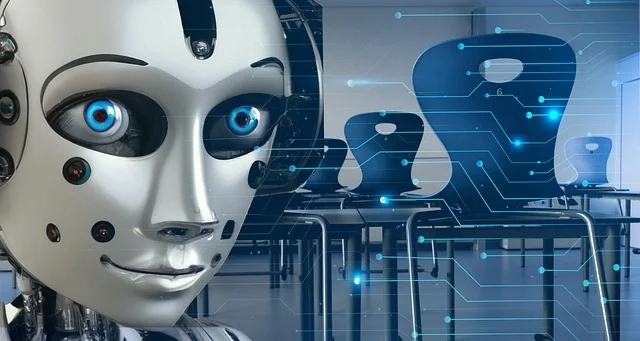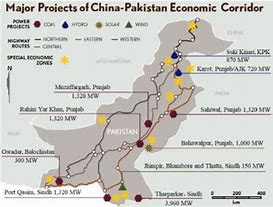NASA has made groundbreaking technological advancements over the years, such as the Hubble telescope, spacesuit technology, Kepler telescope, the International Space Station, and the Mars rovers. Learn more about how these innovations have contributed to our understanding of the universe. The article explores some of the technological advancements made by NASA over the years, such as the Hubble telescope, spacesuit technology, Kepler telescope, the International Space Station, and the Mars rovers. It also highlights the significance of these developments in elevating our understanding of the universe. From revealing the mysteries of the cosmos to discovering planets outside our solar system, NASA’s innovations have paved the way for scientific progress and inspired future generations to continue exploring space.
Despite being immensely exciting, space exploration is very expensive. NASA has a 21.6 billion-dollar budget for the current fiscal year. Imagine the technological advancements the agency can make with a budget this large. Even if you think that the technology we use every day, such as smartphones and smart speakers, is advanced, it is nothing compared to the complexity of space technology. But why developed worlds are spending such heavy amounts of their tax collections on space exploration? The simple answer is they know it is going to be a great economic opportunity in future. The countries have started a fight for space occupation. Pakistan’s economy has too much scope for development and research in this field. So we should also focus on space technologies and discoveries and try to avail our share in the space objects like Mars and the moon.
NASA has a long and illustrious history of creation, and many of the innovations produced by the agency have made space-age technology available to the general population. While tang and other commonplace goods have been incorrectly credited to NASA, many others would not be possible without NASA. Scientists and engineers are pushing the limits of human understanding since its founding. NASA has operated following its principal mission to fund research on flying issues; both inside and outside of the earth’s atmosphere, as well as for other objectives. NASA’s numerous new scientific advancements, patents and spin-off technologies have been developed in support of this admirable goal.
Hubble space telescope: The telescope has been one of the most effective developments in space exploration ever since its inauguration in 1990 because it is 569 kilometres above the surface of the earth. This technology avoids air distortion enabling it to send back thousands of incredible photographs. It has also contributed to explaining many of the biggest space mysteries. It has also revealed the existence of dark energy, helped us estimate the age of the universe and revealed the existence of planets, Quasars and many other things. The telescope’s antennae communicate with the Goddard space flight centre by sending and receiving data. Space engineers can transmit commands to it via satellite to communicate with it. The telescope is made up of many smaller systems and two main computers. While one computer instructs the other equipment receives their data and sends it to satellites which then relay this information to the centre. The second computer communicates with the telescope and controls it. Check just some of the gorgeous photos that the sophisticated telescope has captured throughout the years.

Spacesuit technology: A spacesuit costs 22 million dollars to produce and weighs over 300 pounds. They are highly technologically advanced, even if they are incredibly pricey. With the help of spacesuits, we can survive in circumstances and temperatures that would be impossible for humans to endure for more than a few seconds without assistance. They also store water for drinking during spacewalks and give us oxygen to breathe. While in space, the suitcases also shield astronauts from radiation from the area, intense sunshine and room dust, and allow them to move around in locations with a limited gravity field. We wouldn’t be able to walk on any other terrestrial planets without these complex spacesuits.

The Kepler Space Telescope: Although it was originally intended to last three to four years, the inexpensive Kepler telescope instead lasted nearly ten years. To locate earth-like planets outside our solar system, this telescope was constructed. More than 4500 planets and planet candidates were discovered during their lifetime. Kepler spent nine years in space, four of which were spent facing the constellation Cygnus, where many of these planets and stars were first found by keeping an eye out for dimmer stars. As planets passed in front of them, Kepler identified exo-planets or planets that orbit stars outside our solar system. Kepler’s greatest discovery was the diversity of our universe which at times included planets orbiting several stars, as in the star wars universe. Humans would not be able to view anything beyond our immediate area without telescopes like these. In actuality, a human has only ventured 400171 kilometres from our planet. Incredibly, our telescopes like Hubble can view up to 13 billion light years into space because a light year is equal to about 9.46 trillion kilometres.

International space station: The international space station or ISS weighs about a million pounds and has so far cost about 160 billion dollars is the largest and most expensive piece of technology ever constructed. Five miles per second is the maximum speed that this cutting-edge technology permits its passengers to go. Therefore orbiting the Earth would be completed in just 90 minutes. Additionally, it enables simultaneous connections of up to six spacecraft to the station. Despite being quite advanced, this technology requires a lot of maintenance. The systems on the space station are controlled by more than fifty computers and over 1.5 million lines of flight software are supported by more than 3 million lines of software code on the ground. Despite the high costs involved, these space investments are incredibly worth it. While we are learning more about the effects of space on the human body, both physiologically and psychologically, thanks to the ISS which functions as a science laboratory.

Mars rovers Spirit and Opportunity: The two successful Mars rovers that helped mankind with many discoveries on Mars and were technologically developed enough to be commanded from the earth were Spirit and Opportunity. Their intention when landing on quite different sides of Mars was to conduct field geology and observe the atmosphere. In addition to giving us the first colour and clear photographs of Mars’s surface, they also found that water was flowing intermittently on Mars. In 2015, both these rovers outlived their predicted 90-day life spans by many years, making them among NASA’s most productive creations.

Memory foam: NASA invented memory foam for the first time in 1996 to make astronaut seats adaptable the original goal in part to lessen the effects of g-forces during takeoff and landing. The wide range of physical characteristics among astronauts was quickly identified as a potential issue. They also observed that when they practice their body types alter theoretically. This would imply that special seats for each passenger could need to be modified for each flight. Finding a different approach was essential because this was not at all practicable. The answer was to create a material, hence the name memory foam. It could take the shape of an astronaut and then revert to its rest state when not in use. Beginning in the early 1980s, NASA allowed memory foam to be used by the general population. Although it was once exceedingly expensive for private businesses to duplicate, its manufacturing costs have decreased significantly over time. Memory foam is now used in many different goods, including football helmet liners and beds, depending on the use. The majority of contemporary memory foam is made mainly of polyurethane with a few extra additions to boost its viscosity and density. Since the makers believe the recipes to be well-guarded secrets, the foam differs greatly among them.

Dust Buster: NASA created the little dust buster as a component of the Apollo space mission. The initial goal was to create a portable, self-contained drill that could collect core samples from the moon’s surface. When asked to create this tool, Black and Decker agreed, and they later came up with the computer software to aid in the design’s optimization. The technology was improved using the computer program to deliver the best motor power with the least amount of power usage.










2 Comments